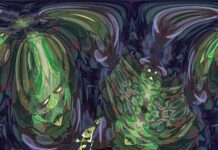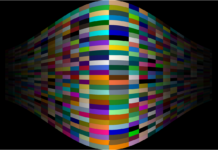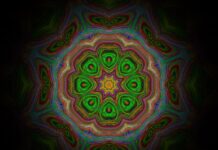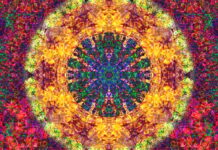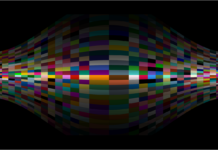Grimdark is a subgenre of speculative fiction characterized by its gritty, morally ambiguous, and often bleak portrayal of worlds and characters. Originating from the darker themes found in fantasy literature, grimdark has since expanded to encompass other genres, including science fiction and horror. It explores themes of violence, corruption, power struggles, and the human condition, offering readers a more realistic and complex depiction of life and society.
1. Definition and Origins
Grimdark literature is defined by its dark and cynical tone, where traditional notions of heroism, morality, and justice are subverted or challenged. The term “grimdark” was popularized in the late 20th century by British author and game designer Jim Hutton, who used it to describe the gritty and morally ambiguous elements found in his Warhammer 40,000 universe. However, grimdark themes can be traced back to earlier works of fantasy literature, including the works of authors such as Michael Moorcock and George R.R. Martin.
2. Gritty Realism
One of the hallmarks of grimdark fiction is its gritty realism, which eschews idealized portrayals of heroes and villains in favor of flawed and morally ambiguous characters. Protagonists in grimdark stories often face difficult choices and moral dilemmas, and their actions may have ambiguous or morally questionable consequences. This emphasis on realism and moral complexity adds depth and nuance to the characters and allows for more nuanced exploration of themes such as power, corruption, and redemption.
3. Moral Ambiguity
Grimdark literature is characterized by its moral ambiguity, where traditional notions of good and evil are blurred or inverted. Protagonists may exhibit morally questionable behavior, while villains may possess sympathetic or redeeming qualities. This moral ambiguity challenges readers’ preconceptions and invites them to question the nature of morality and ethics in the face of adversity. By presenting characters with conflicting motivations and moral dilemmas, grimdark fiction encourages readers to grapple with complex ethical questions and consider the shades of gray in the human experience.
4. Dark and Bleak Settings
Grimdark stories are often set in dark and bleak worlds characterized by violence, corruption, and decay. These settings may be inspired by historical periods of conflict and upheaval or imagined dystopian futures where societal collapse has led to lawlessness and chaos. The atmosphere of these settings is oppressive and foreboding, with danger lurking around every corner. By immersing readers in these grim and unforgiving worlds, grimdark fiction creates a sense of tension and unease that drives the narrative forward.
5. Themes of Power and Corruption
Themes of power and corruption are central to grimdark literature, exploring the corrupting influence of power and the lengths to which individuals will go to obtain and maintain it. Characters in grimdark stories often find themselves embroiled in power struggles, whether on a personal or societal level, and must navigate the treacherous waters of politics, betrayal, and manipulation. The portrayal of power in grimdark fiction is often cynical and pessimistic, highlighting the inherent flaws and vulnerabilities of human nature.
6. Subversion of Tropes
Grimdark literature frequently subverts or deconstructs traditional tropes and conventions found in fantasy and other genres. Instead of the noble hero embarking on a quest to defeat the dark lord and save the world, grimdark stories may focus on antiheroes, mercenaries, or outcasts navigating morally ambiguous landscapes. Similarly, traditional fantasy races such as elves and dwarves may be portrayed in a more realistic or cynical light, with their own flaws and prejudices. By subverting tropes, grimdark fiction challenges readers’ expectations and invites them to reconsider familiar narrative conventions.
7. Exploration of the Human Condition
At its core, grimdark literature is a reflection of the human condition, exploring themes of mortality, suffering, and resilience in the face of adversity. Characters in grimdark stories are often flawed and vulnerable, grappling with their own inner demons and external challenges. Through their struggles and triumphs, readers are offered insights into the complexities of human nature and the universal experiences of love, loss, and redemption. Grimdark fiction reminds us that life is not always fair or just, but it is our choices and actions that define us in the end.
8. Impact and Influence
Grimdark literature has had a significant impact on the broader landscape of speculative fiction, influencing the tone, themes, and storytelling conventions of other genres. Its emphasis on realism, moral ambiguity, and gritty realism has inspired countless authors to explore darker and more complex narratives in their own work. Additionally, grimdark themes have permeated other forms of media, including film, television, and video games, contributing to the popularity of darker and more mature storytelling across various mediums.
9. Criticisms and Controversies
While grimdark literature has its dedicated fanbase, it has also faced criticism for its portrayal of violence, misogyny, and nihilism. Some critics argue that grimdark fiction glorifies or romanticizes violence and suffering, while others take issue with its often bleak and pessimistic worldview. Additionally, grimdark literature has been accused of perpetuating negative stereotypes and tropes, particularly in its treatment of female characters and marginalized groups. These criticisms have sparked debates within the literary community about the ethical and artistic implications of grimdark fiction and its impact on readers and society.
10. Evolution and Diversity
In recent years, grimdark literature has evolved to encompass a broader range of voices, perspectives, and themes. Authors from diverse backgrounds have contributed to the genre, bringing their own unique perspectives and experiences to grimdark storytelling. This diversity has led to a more nuanced and inclusive portrayal of characters and themes in grimdark fiction, challenging stereotypes and expanding the boundaries of the genre. Additionally, the rise of self-publishing and online platforms has provided opportunities for emerging authors to explore grimdark themes in their own work, further enriching the genre with fresh voices and perspectives.
Grimdark literature, born from a desire to explore darker and more complex narratives, has evolved into a diverse and dynamic genre that challenges traditional tropes and conventions. Its gritty realism, moral ambiguity, and bleak settings create a compelling backdrop for exploring themes of power, corruption, and the human condition. By subverting traditional tropes and deconstructing familiar narrative conventions, grimdark fiction invites readers to question their assumptions and confront uncomfortable truths about the nature of morality and ethics. While grimdark literature has faced criticism for its portrayal of violence, misogyny, and nihilism, it has also sparked important discussions about the ethical and artistic implications of dark storytelling. As the genre continues to evolve and diversify, it remains a powerful vehicle for exploring the complexities of the human experience and challenging readers to confront the darker aspects of the world around them. Grimdark’s impact extends beyond literature, influencing other forms of media and contributing to a broader cultural shift towards darker and more mature storytelling. As readers continue to seek out narratives that reflect the complexities of life and society, grimdark literature will likely remain a compelling and thought-provoking genre for years to come.








